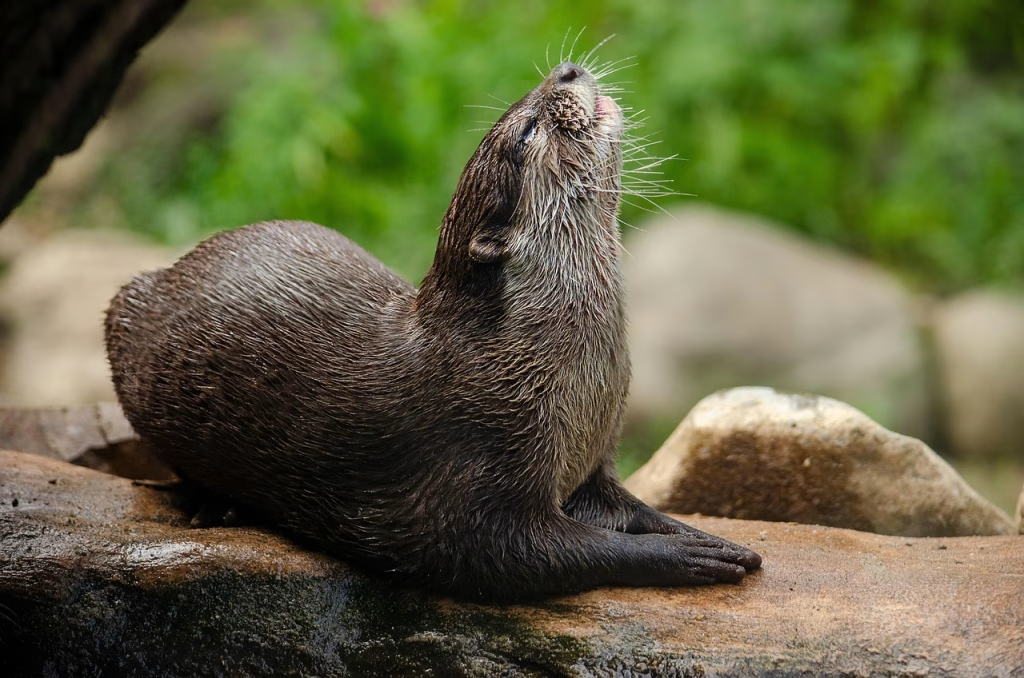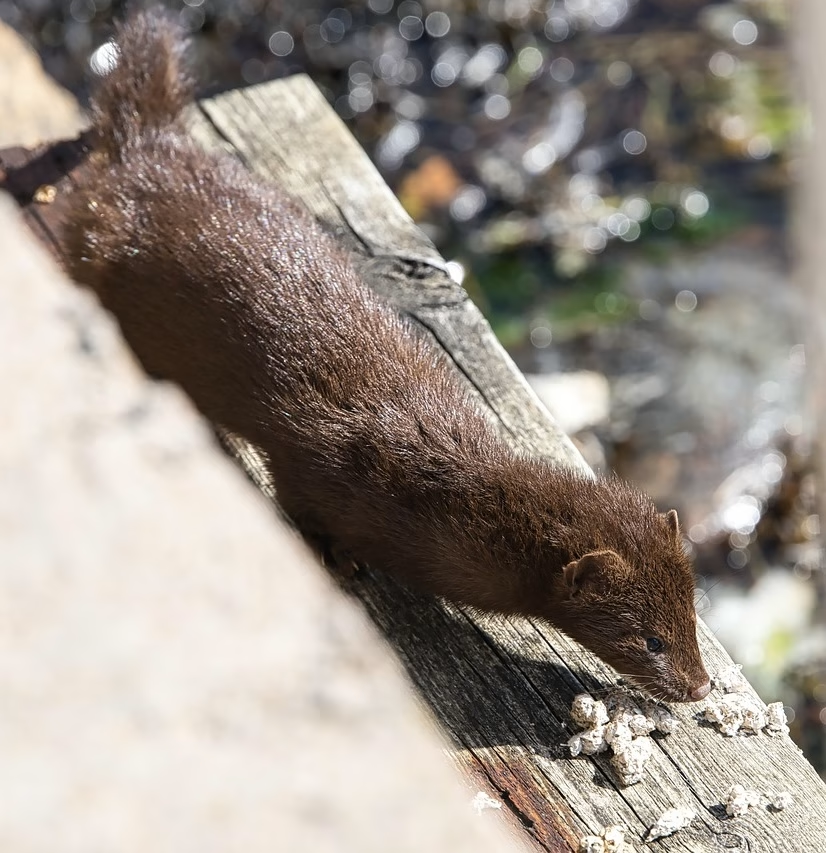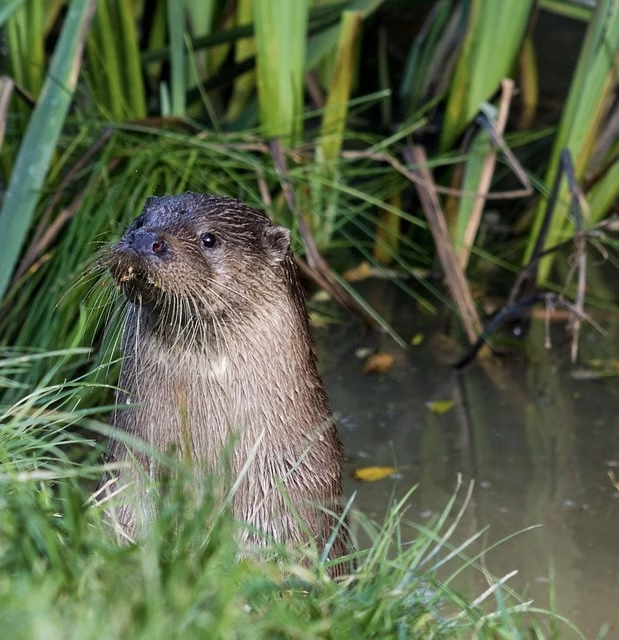Rewilding Species of the Month: The Otter

The otter has quite rightly earned its place in the rewilding species of the month spotlight. In both literature and folklore, otters are often presented as helpful souls: coming to the rescue and giving support in a character’s hour of need. Now, as the planet warms, we are finding that they are living up to the legend.
Why otters are furry climate warriors!
Scientists have observed that otters play a crucial role in marine-based ecosystems, which are currently under threat. They have even been dubbed ‘furry climate warriors’. This is down to otters’ relationship with kelp. Kelp forests are one of the most important ecosystems on the planet: sustaining a variety of species, helping to reduce coastal erosion, and drawing down carbon. In fact, they are estimated to sequester a massive 4.91 megatons of carbon from the atmosphere every year. However, kelp forests are facing widespread decline. This is for a variety of reasons from bottom trawling to pollution to ocean warming. Where the otter comes into its own is as a keystone predator, controlling the population of greedy kelp gobbling sea-urchins. Since the economic value to us of kelp forests has been calculated at around $500 billion a year, it would appear that we owe the otter big time!
There are ‘urchin barrens’ in kelp forests across the world, including in the North Sea, but it was in the Aleutian Islands that biologist Jim Estes discovered the importance of otters to kelp. According to Estes, the effects in areas where otter populations had been diminished by hunting “became clear in an instant”. Where there were otters, there were lush kelp forests. Without the otters, there was just an empty seabed littered with kelp nibbling urchins.
Why Ratty loves Otter.
Although they like to play in the sea along our coastlines, like most species of otter, our Eurasian otter needs access to fresh water. This is not only to drink, but also to keep their fur in pristine condition. Some otters forgo the pleasures of the coastline altogether and instead spend their lives whistling in the wetlands or playing in rivers, canals and lakes up and down the country.
Whilst they have a reputation as playful creatures, they are also doing important work here too. As apex predators, they help to ensure the balance of natural ecosystems by keeping in check the population of species they prey upon. Otters have lived in the UK since at least the last ice age, an incredible 11,000 years ago, and they have adapted and evolved to our landscapes alongside other native species. One such species is the water vole. This little creature, who we learned to love as Ratty in Wind in the Willows, is now one of the fastest declining species in the UK. Otters and water voles have been affected by a loss in the habitat they both share, placing them both on the protected species list. However, unlike the otter, water voles are also at the mercy of an invasive species with a voracious appetite: the American mink.
Mink arrived in the UK in the 1920s to stock fur farms. Blame for their appearance in the wild is often laid at the door of the animal rights activists who set them free. This does not, however, account for all the escapees: some mink made their own way out of poorly maintained farms and others were released by their owners as an easier option when the fur farms were no longer turning a profit.
Just at a point where otters were in trouble due to river pollution, pesticides, and habitat loss, the mink stepped in to fill the gap as well as to feast on dear old Ratty. Thankfully, in a success story for conservation, the fortunes of the otter changed. In 1978, the hunting of otters was banned (much to the relief of those traumatised by reading Williamson’s classic tale of Tarka the Otter). In that same decade, the dangerous pesticides which threatened otter survival were also largely banned. Fifty years on, otter populations are on the rise, and they can now be found again in every county in Britain
This is excellent news for our friend the water vole. According to a study by Bonesi and Mcdonald for Oxford University’s Wildlife Conservation Unit, as otters make their comeback, they are displacing the mink who are putting the water voles’ lives at risk.
Was it an otter or a mink?
For those living in areas inhabited by both otters and mink, ‘Was it an otter or a mink?” is a common game played out along the riverside and via photographs on local social media.
If you see a mustelid swimming along your river it’s more likely to be a mink. Mink are much bolder than their shy and secretive European cousins and are out at any time, day or night, not particularly caring whether there are any humans present. And they swim higher on the water with more of their body visible whereas the otter will be mostly submerged with just their head and tail visible. That said, mink are smaller: they are roughly the same size as ferrets whilst otters are much larger with a body length of 60-80cm and a tail length of 32-56cm. If you’re lucky enough to see their face, the differences are even more apparent. An otter’s face is more rounded and seal-like with a broad snout whereas mink have pointed noses. This pointed nose means that mink will make a V-shape ripple in the water when swimming instead of a U-shape.


My favourite top tip in finding out if you have a mink or otter on your stretch of river is to smell its poo (spraint). Mink spraint smells foul and fishy, whilst otter poo smells of jasmine tea. (Enjoy dropping this nugget into your next ‘otter or mink’ chat!)
Looking after our loveable heroes.
The return of the otter shows the success of measures taken to reverse the damage humans have done to our environment. However, it should also act as a cautionary tale. Otters rely on healthy freshwater ecosystems. Though they can live for up to ten years, in the wild they are currently averaging only four. If we value the otter, and hopefully this blog shows you why we should, we must prioritise the health of our waterways. In fact, we should go further, and reverse more of the damage that humans have done. In this way, native species, like the otter, can really thrive. The Rottal Burn in Scotland provides a great example of this. A decade ago, this river was ‘rewiggled’ to follow its natural path, freeing it of the constraints that humans had put upon it when it was radically straightened early in the 19th Century. Since then, there has not only been an increase in the otter population, but an overall increase in biodiversity as the river and its bank becomes more dynamic and healthy.
Literature records that otters warmed St Cuthbert’s feet while he prayed; towed the boat of BB’s Little Grey Men and offered to guide the way and punch in heads in Wind in the Willows. Now scientific research has shown that otters are helping to save water voles, mitigate against climate change; and safeguard ecosystems. Whether you’re a science geek or a literature lover, it’s clear that otters deserve both our respect and our protection.
Our blog posts are written by our core team and guest bloggers. If you have an idea for a blog post please pitch it to us: info@wildcard.land
ARCHIVES
- October 2025
- September 2025
- August 2025
- July 2025
- June 2025
- May 2025
- April 2025
- March 2025
- February 2025
- December 2024
- November 2024
- October 2024
- September 2024
- August 2024
- July 2024
- June 2024
- March 2024
- February 2024
- January 2024
- December 2023
- November 2023
- August 2023
- July 2023
- May 2023
- February 2023
- January 2023
